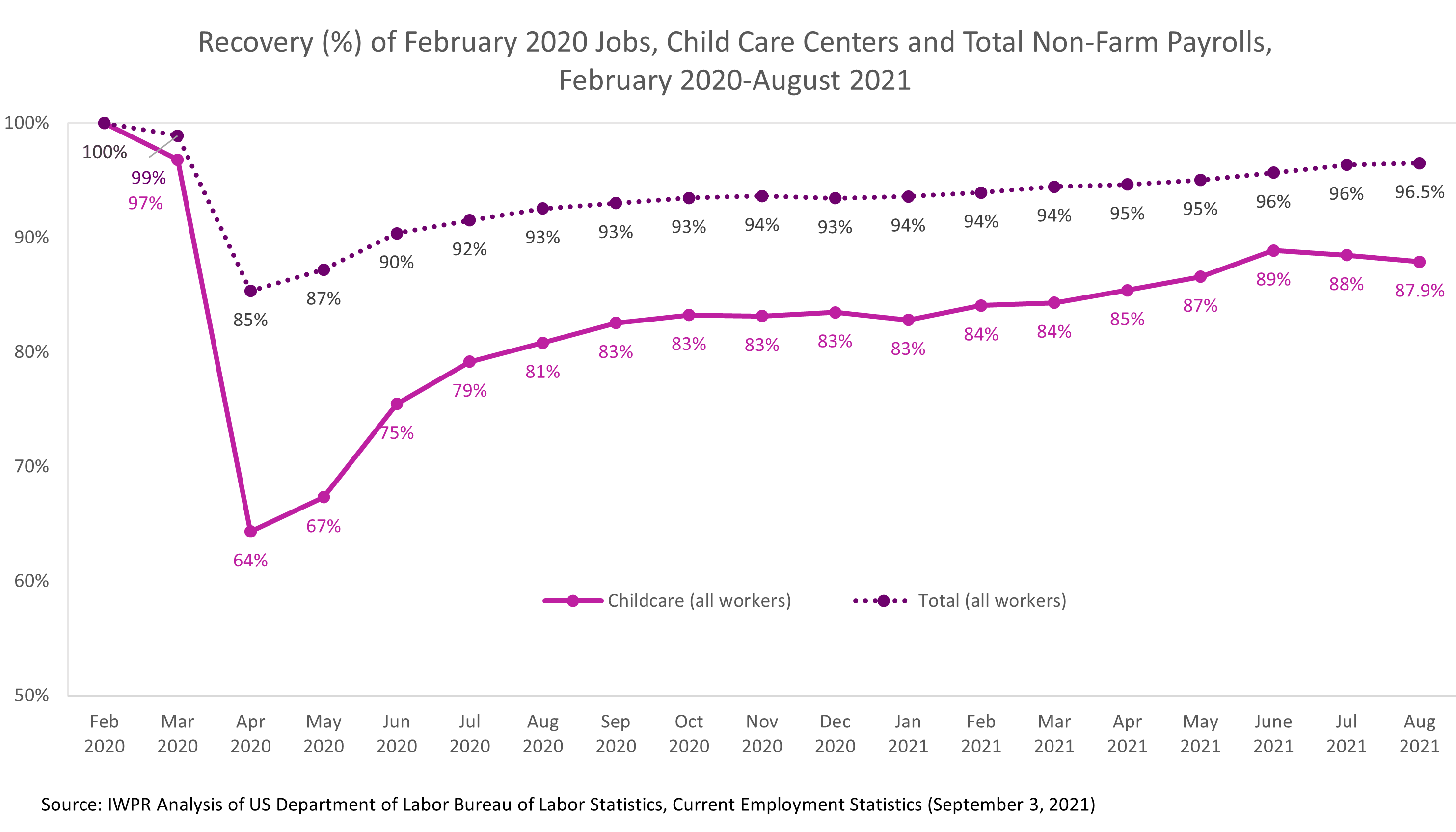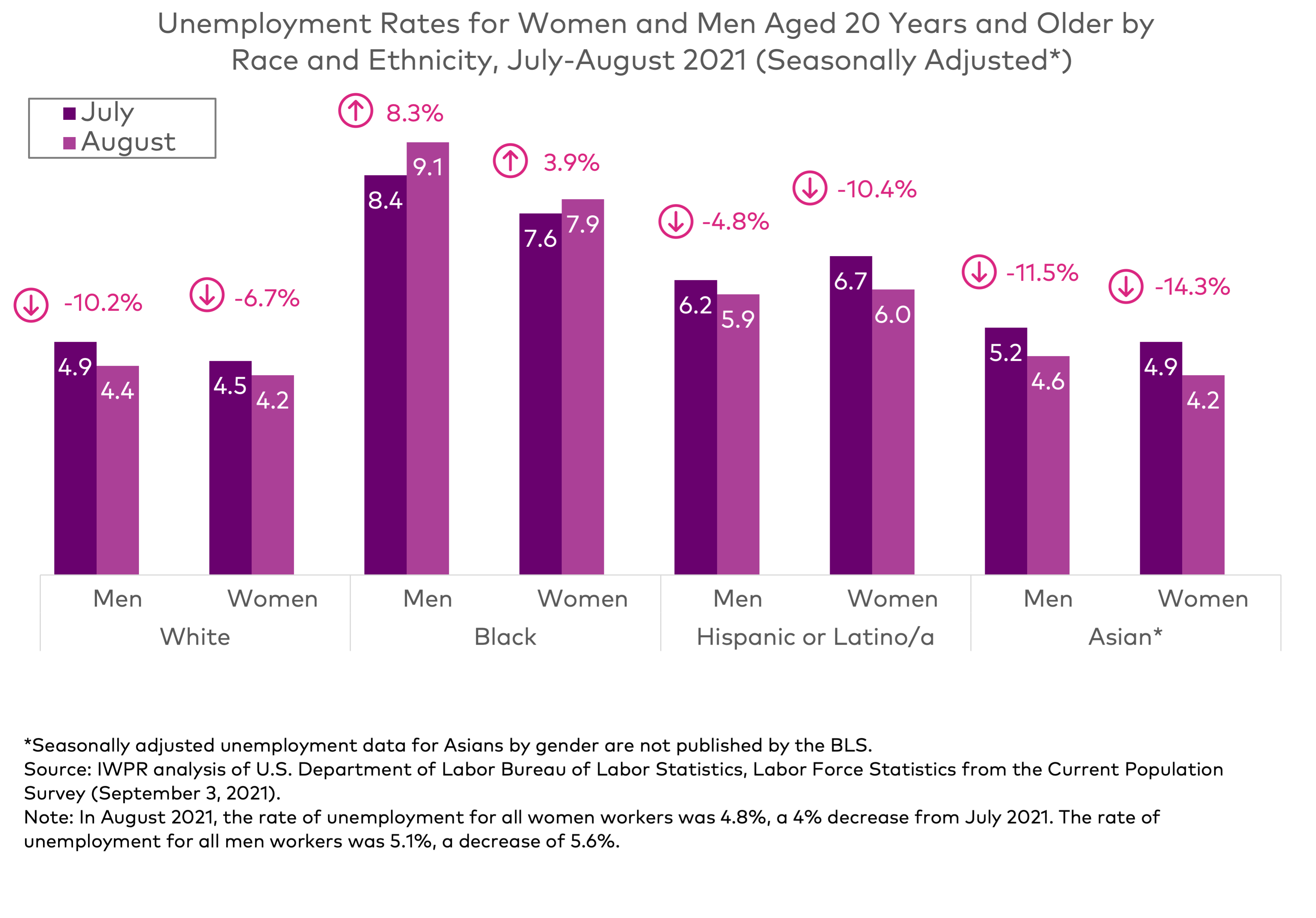FOR IMMEDIATE RELEASE – September 3, 2021
Contact: Erin Weber | weber@iwpr.org | (646) 719-7021
Washington, DC – This month’s jobs report from the Bureau of Labor Statistics (BLS) reveals a disappointing growth of just 235,000 new jobs across the board, but the news is even worse for women. In August, women gained a much lower number of jobs than men, a reversal from July. Specifically, the report shows just 28,000 new jobs on payroll for women in August, just 11.9 percent of total job growth of 235,000 and the lowest growth since December last year. Women’s jobs on payroll are still three million below pre-COVID-19 levels, further behind than men, who still have 2.3 million fewer jobs than in February 2020 overall.
And while 235,000 new jobs would represent decent monthly growth pre-pandemic, it indicates that the Delta variant likely remains a significant headwind in the nation’s economic recovery and that American workers and families will continue to need financial support until the summer surge in the pandemic resides.
“We are not in the clear. There is still much work to do to support women’s re-entry into the workforce. While unemployment has dropped among women, Black women employed in the hardest-hit sectors are still struggling to regain their economic footing,” said C. Nicole Mason, PhD, IWPR President and CEO. “Getting the pandemic under control and promoting targeted job and training programs will go a long way towards creating an equitable recovery for women, particularly women of color.”
“Perhaps most alarming is the fact that many of the programs that have provided crucial financial support to women and their families during the pandemic are set to expire. If today’s jobs report is any indication, it’s too soon to strip away the policies that have staved off financial hardship for so many American families,” said Mason.
“We are also likely seeing a ‘Great Renegotiation’ as women reassess the role of work in their lives, and what they want from employers in terms of workplace flexibility, salary, and health care,” Mason said. “This represents a great opportunity to potentially reset the employer-worker relationship in this country for women, but it will take time to see how women navigate the next few months in terms of how, if, and when they re-enter the workforce and the impact of those decisions on the American economy.”
For individuals across racial and ethnic groups, the jobs report contains a mixed bag: Black women saw an increase in the rate of unemployment (from 7.6 to 7.9%) while unemployment fell for women of other large racial or ethnic groups. Latina women’s unemployment fell from 6.7% to 6.0%, White women’s from 4.5% to 4.2%, and Asian women’s (seasonally unadjusted) from 4.9% to 4.2%. The risk of unemployment continues to vary strongly by race and ethnicity. Black adult women’s unemployment is 1.9 times higher than White women’s, and Latinas’ 1.4 times higher.
The child care sector continues to struggle as well, presenting ongoing problems for mothers as employment in the sector fell by 5.9K. The gap in job recovery between child care centers and the total economy also widened, with child care jobs at 87.9% of pre-COVID levels, compared to 96.5% recovery of total jobs numbers.
IWPR analysis of the Bureau of Labor Statistics report was provided by C. Nicole Mason, Ariane Hegewisch, Chandra Childers, Shengwei Sun, and Eve Mefferd.
###
The Institute for Women’s Policy Research strives to win economic equity for all women and eliminate barriers to their full participation in society. As a leading national think tank, IWPR builds evidence to shape policies that grow women’s power and influence, close inequality gaps, and improve the economic well-being of families. Learn more at IWPR.org and follow us on Twitter.




